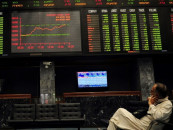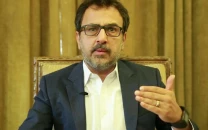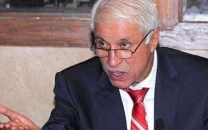Port Grand claims to have it all, but will the project stand the test of time?
At the cost of Rs300, Karachiites will finally have the answer to “What is there to do in Karachi except eat?”

Port Grand claims to have it all, but will the project stand the test of time?
The Managing Director of the Grand Leisure Corporation, Shahid Firoz, certainly believes so. After all, the company has invested a billion rupees in the project. He recalls that a public tender was issued for the development of this historic piece of property by the Karachi Port Trust (KPT) in 2003. Although reluctant at first, Firoz submitted a bid in the interest of “not demolishing a piece of history”. The bid totalled Rs130 million. The cost incurred today is more than eight times the initial bid. To keep such a project afloat despite such expenses, one has to wonder whether the founders were hopelessly optimistic about future revenues or steadfastly resolute in their service to the citizens of the city.
Firoz says that it is a combination of both. Citing examples of his previous appointments with the Economic Development Council for urban Sindh, he provides credibility to his affection for the city. Firoz need not flaunt his business credentials. The Grand Leisure Corporation is part of the Arifeen Group. The latter may be recognised as the corporate entity that spawned Envicrete, a name visible on footpaths under construction throughout the city. As Firoz summarises it, “making money from something you love” is most favourable.
Recovering investment
For the project’s sake, one can only hope that investors and citizens share Firoz’s passion. Investors will fret over the maintenance and upkeep associated with such a project. After all, there are enough examples of such projects lying in a state of abject neglect throughout the city. The billion-rupee project is expected to recover its investment in due time though. With an entrance price of Rs300 and an expected attendance of between 7,000 and 10,000 people per day on weekdays and 15,000 people per day on weekends, total annual revenue from only entrance receipts is an expected Rs1.1 billion.
Other streams of revenue include rent and revenue sharing from tenants and income from advertising. The corporation estimates that people will spend approximately a billion rupees at the venue each year and expect to recoup a part of that in revenue. The estimated foot traffic also makes Port Grand a valuable advertising space.
Convincing 15,000 people to attend every day on a given weekend might not be that tough, according to Firoz, considering the experience Port Grand has to offer. He believes that the venue will provide an experience that will trump security concerns. He summarises eloquently, “We feel security comes from breaking down walls, not by building walls.” One can only hope that citizens concur.
Environmental concerns have also been addressed according to Firoz. “Not a single tree was cut and there was no littering or pollution in the sea.”
At the venue, a Hindu temple adorns the backdrop. It was revealed that the Hindu community did initially resist the construction of Port Grand on various counts. However, the management of Port Grand claims to have brought all stakeholders on board and all disputes have been resolved amicably. It was learned at the venue that the temple is due to be renovated as part of the agreement.
Launch delayed
The project is substantially overdue though. The first media reports of the project state 2006 as the expected year of completion. The corporation claims that it had to completely revamp the rotting Native Jetty Bridge as part of the project which led to the ballooning expenses and a delayed launch. The usual rumours of mischief were bound to surface, especially considering the scale of the project.
According to sources, cement supplies for the project were supposed to be bought from a single contractor. However, cement was sourced from a number of different suppliers during construction, giving rise to claims of fraud. Fortunately for the corporation, the project remained largely under the media’s radar up until very recently.
Port Grand was initially meant to rival Lahore’s food street and comprise a multitude of traditional dhabaas and baithaks. As it stands now, Port Grand’s food street rivals Zamzama more than it comes close to Burns Road in its offerings.
Aside from the food street, Port Grand boasts a shopping mall, an art gallery, an open air performing stage and a planned movie theatre amongst its offerings. At the cost of Rs300, Karachiites will finally have the answer to “What is there to do in Karachi except eat?” One has to hope that this project overcomes a plethora of potential roadblocks to achieve financial feasibility. As for rivalling San Francisco’s Pier 39 or Singapore’s Clarke Quay in its grandeur, citizens can keep their fingers crossed. All said and done, it seems the city might have a project whose social benefit outweighs its private benefit.
Published in The Express Tribune, October 11th, 2010.


















COMMENTS
Comments are moderated and generally will be posted if they are on-topic and not abusive.
For more information, please see our Comments FAQ